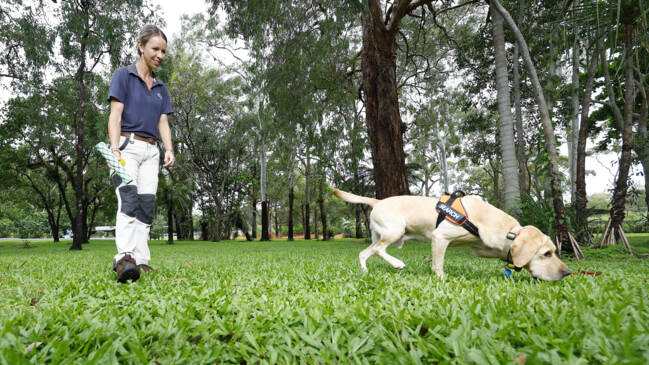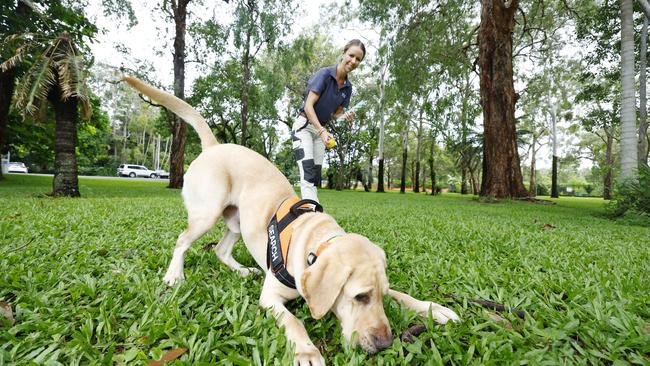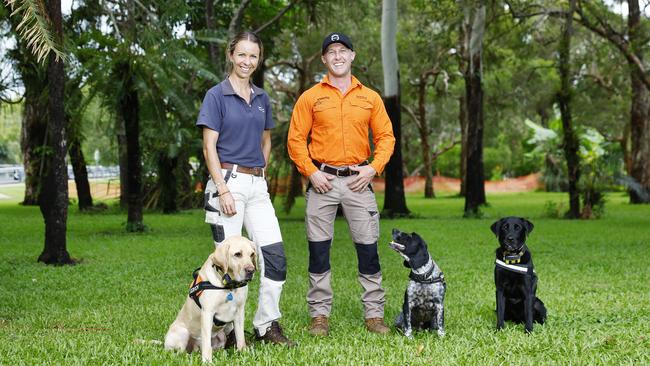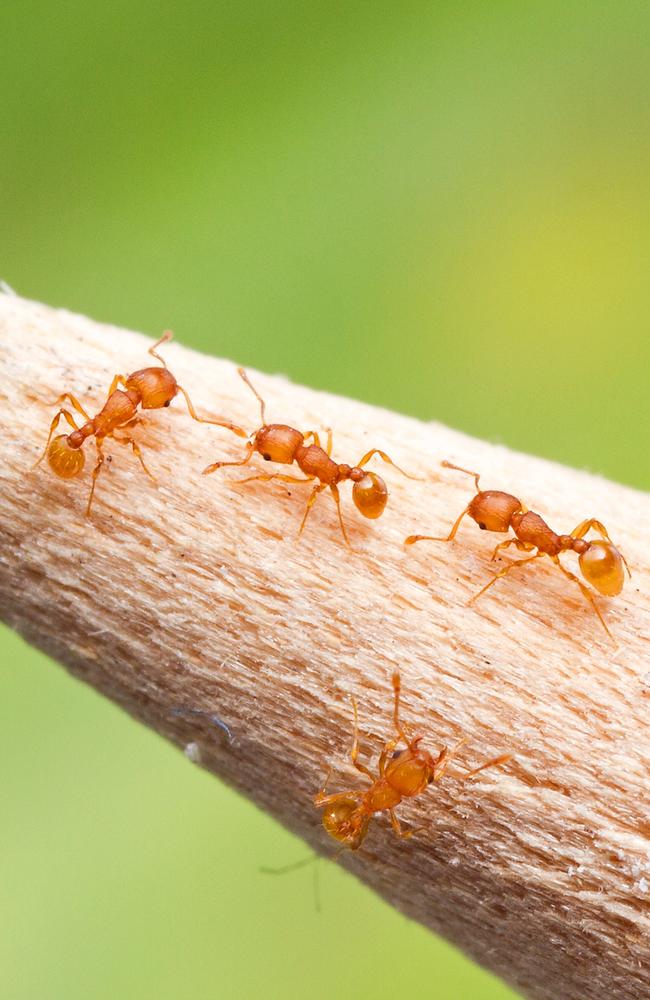Ziggy, Hank and Spencer are on the job clearing Cairns of a dangerous imported pest
Sniffing out a single ant – and an ant that can literally fit through the eye of a needle – can be thirsty work. Here’s how this pawsome foursome gets it done.

Cairns
Don't miss out on the headlines from Cairns. Followed categories will be added to My News.
Sniffing out a single ant – and an ant that can literally fit through the eye of a needle – can be thirsty work.
That’s why labradors Ziggy and Hank, English springer spaniel Spencer and a further three-year-old labrador-in-training named Macy usually punch their clock by lunchtime.
The four, four-footed ant-detector dogs are an integral part of the Department of Agriculture and Fisheries’ National Electric Ant Eradication Program (NEAEP) on behalf of the Federal Government and all State and Territory governments.
National Electric Ant Eradication senior project officer Gary Morton said despite their interesting name, electric ants are a serious threat in Cairns.

“They are a serious invasive pest that have the potential to affect our health and outdoor lifestyle, as well as our tourism and agriculture industries,” he said.
The six-legged pests were first detected in Cairns in 2006, and since that time 171 infestations have been found, ranging in size from a single pot plant to the original infestation at Smithfield, which was more than 30 hectares.
“The program has eradicated over 78 per cent of all infestations,” he said.
Going back a step, electric ants (Wasmannia auropunctata) are one of the world’s worst invasive species.

From Central and South America, and not to be confused with Crazy Ants, they have a painful sting that can blind pets and cause severe allergic reactions in humans.
Electric ants are golden-brown and generally grow to just 1.5mm.
“As of May 2022, the Program has successfully eradicated these invasive ants from approximately 201 hectares across five local government areas including Cairns Regional Council; Cassowary Coast Regional Council; Tablelands Regional Council; Douglas Shire Council; and Mareeba Shire Council,” Mr Morton said.
Thirty-seven further infestations are being eradicated.

The program’s operational teams conduct regular surveillance around high-risk sites and treat known infested areas, he said, and since 2010, have employed the team of Ziggy, Hank and Spencer, the world’s only known electric ant detection dogs.
“Good detection dogs need to have a high drive and intelligence, a good nose, lots of energy and to love play,” Mr Morton said.
After the infestations are treated with a species-specific bait, the dogs are sent back to the affected area up to twice more to see if any ants have escaped.
“When they can’t detect any more ants, a final round of trapping is done before the area is declared ant-free,” Mr Morton said.
As an employee of Biosecurity Queensland, he and his two-footed and four-footed team are committed to eradicating the ants, but a key to that is “continued assistance from the community”.
“Initiatives such as free backyard checks, the Great Backyard Electric Ant Hunt, a four-week eradication campaign in Kuranda, and great co-operation from local councils have helped stop the spread of electric ants,” he said.
“There are simple things that people can do to reduce the risk of bringing electric ants onto their property.
“Electric ants live under stones, blocks, sleepers, logs and in garden waste, leaf litter, soil and trees. Moving these materials poses a serious risk of spreading the pest.”
For more information on the electric ant eradication program or to report electric ants, visit www.biosecurity.qld.gov.au or call Biosecurity Queensland on 13 25 23.
More Coverage
Originally published as Ziggy, Hank and Spencer are on the job clearing Cairns of a dangerous imported pest




